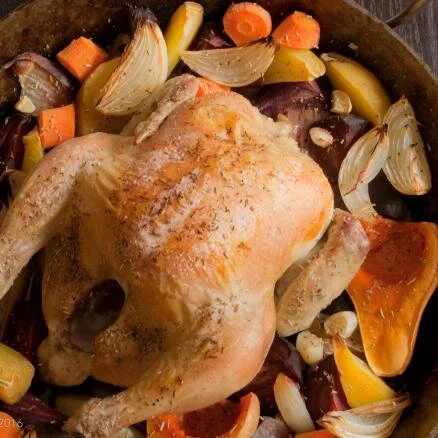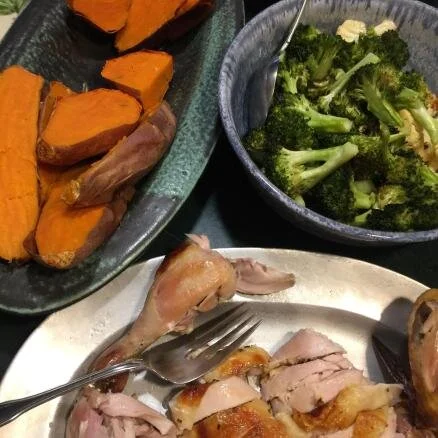By Monika Bock – Nourish-alō holistic nutrition
Back to a schedule. Back to school. Back to not knowing what to cook or prepare on a daily basis? It doesn’t need to be hard to get yourself and your family on a new schedule and to include some batch cooking into your week with a bit of forethought and experimentation.
Batch cooking is a way to prepare food in greater quantities ahead of time that makes putting together meals require a bit less time and energy. When you cook a meal you might only make enough to serve your family for that evening; however, if you double or triple the recipe, you will have enough leftovers to create another meal (that isn’t just a duplicate of the one you just prepared) without doubling the time in the kitchen. Instead of mixing together items as a recipe may call for, cook more of the individual ingredients and you’ll be able to put them together in a different way. Using tools like a slow cooker can make mealtime a bit less stressful. With fall right around the corner, hearty stews and soups are a perfect addition to your weeknight schedule.
Here are some batch cooking ideas for dinner that come together in no time at all and are basic in that they don’t require a lot of ingredients or preparation.
Whole roast chicken:
This chicken can be roasted in the oven at 190℃ for about an hour or popped in a slow cooker for 2 hours on high or 5-7 hours on low for more of a pulled “fall off the bone” shredded chicken. You can serve as is with roasted veggies, shred it for Taco Tuesday, or cube it for lunch boxes and chicken salad.
Roast chicken and veggies dinner
Roasted veggies:
What vegetables do your kids enjoy? Not many? Have you tried roasting them? Roasting vegetables gives them a different taste than boiling, steaming, or microwaving. Add herbs like garlic and onion and drizzle with olive oil after it comes out of the oven. Wash, chop, peel (if necessary), and sprinkle with salt and pepper. That’s as easy as it can get. Kid-friendly veggies include zucchini, broccoli, sweet potato, brussels sprouts, butternut squash, pumpkin, onions, or insert your favorite here.
Bonus tip: Add chicken legs on top and roast away. Dinner in one roasting pan ready in about 50 minutes.
One pot meal: Curcuma garlic chicken with roasted veggies dinner
Other tips:
Start small and slow:
If you haven’t ever batch cooked, then yes, there might be a bit of change necessary and some time to adjust. Take some time on the weekend, or while the little ones are at school, to look up recipes to try; this may be the perfect time to experiment with different dishes. That way if something doesn’t turn out you won’t be stuck at meal time with “hangry” family members lurking in the other room. Once you’ve got a recipe you and your family enjoy make it again and put it into the rotation. You can always adjust flavor profiles by adding in different herbs and seasonings.
Ask for help:
This is a big one: all too often we feel the need to go at it alone. It’s ok to ask for help; it may be hard for you to do, and if it is start small. If you like to prepare food then have your partner clean up or ask them to prepare part of the meal and you the rest, etc. Your little ones can help with preparation as well – including them in things like getting out bowls to use (measuring cups) or let them use utensils like a whisk or spoon to mix. They can help with pouring or “dumping” different measured foods into the recipe. They can turn on the oven and turn the knobs to the correct temperature. They can also help with cleanup – putting things in the dishwasher, even wiping down the counter. You might be thinking – ‘Why would I have x wipe down the counter? I’ll just have to do it myself later’ While this may be true in the short term, providing kids with these opportunities to be stakeholders in their home will pay off as they get older and can take on more responsibility.
What about lunch?
Lunches don’t always need to be a sandwich and a piece of fruit or a packaged processed item (an added benefit for the environment in cutting down your plastic/packaging use). Most processed foods include preservatives or have had most of the nutrition processed out of whatever the whole food was (before I go down that rabbit hole – that’s a post for another day) and have added oils, sugar, etc, to make up for it in the taste.
Along with the items below, don’t underestimate the power of the leftover. A chicken leg and some roast veggies can also make a tasty lunch for your little ones. Follow these easy steps to easily build lunch for your child(ren) and also for yourself!
How to build a healthy lunch for your child:
Start with some fresh fruits and vegetables (carbohydrates) that your child enjoys: carrots, cucumber, perhaps a sliced apple or strawberries. Prepare these ahead of time, and include your child in the preparation process. Have them peel the carrots for you if they are too young to chop the vegetables. If they are too young for this, have them count or arrange the vegetables by color to involve them in the process of healthy eating. Store the cut vegetables in an airtight glass container in your refrigerator. You can find some here and here.
Steamed sweet potato sticks and roasted beets with kale
Add a protein like some cubed chicken from the roast chicken you made over the weekend or a hardboiled egg. Then add a healthy fat – a few tablespoons of hummus or a nut butter to dip the veggies in. Olives are another tasty way to add healthy fats to your child’s lunchtime routine.
Having some glass or stainless steel lunch containers to make it easy to partition foods is a good idea. Ikea has some durable glass containers in different sizes.
Create your child’s healthy lunch by choosing a few items from each section. It’s a good idea to consult the EWG (environmental working group) list of the clean fifteen and the dirty dozen to ensure you avoid potential pesticides and buy organic when necessary. Remember to always wash your fruit and vegetables before consuming them.
Carbohydrates:
Oranges
Mandarines
Apples
Strawberries
Grapes
Blueberries
Raspberries
Natural applesauce
Carrots
Cucumbers
Grape tomatoes
Celery stalks
Snap peas
Watermelon, cubed or sliced
Roasted vegetables (your child’s favorite), cut into cubes for easy eating
Sweet potatoes
Zucchini
Broccoli
Pumpkin
Beets
Proteins:
Hard-boiled eggs
Chicken that has been cubed or shredded
Lamb meatballs (or beef or pork)
Salmon cakes with squash or zucchini
Cheese (cheddar, feta, etc) that is cubed
Plain yogurt with frozen fruit added in a small container (flavored yogurt has added sugar)
Quinoa
Rice and beans
Tuna salad
Salami roll ups with parmesan cheese cubes
Tuna salad with greek yogurt dill and pickles
Healthy Fats:
Hummus
Nut butters: sunflower seed butter, almond butter, cashew butter. Always check the ingredients (look for no added sugar)
Guacamole
Homemade nut and dried fruit mix Pick from raw almonds, hazelnuts, almonds with dried cherries (no added sugar), raisins, coconut chips tossed together in a bag or glass jar.
Olives
Sign-up for the monthly newsletter http://www.nourish-alo.com and receive three easy breakfast recipes to include into your weekly routine.
Monika Bock
You can find Monika on Facebook, Instagram and Twitter or sign-up for her monthly newsletter where she shares recipes & ideas and where it’s easy to stay in the loop on upcoming events and news. ( www.nourish-alo.com) She is the owner of Nourish-Alō Holistic Nutrition and whose motto is Nourish/Thrive/Sustain. Monika works with a diverse clientele with various health concerns and goals making changes that are both positive and sustainable over time. Her favorite summer fruit are berries of ANY kind and the fresh new crops of apples and figs that are popping up in the markets. Acknowledging that EveryBODY is different and people have individual needs, she addresses these needs through a whole food nutrition program and lifestyle change approach.
All Images copyright: Monika Bock (Images may not be used outside of Über Moms without express permission)





